N++ Review
Back in the heyday of Flash games and the influx of sites hosting them, there was a veritable cornucopia of distractions starring stick people and basic platforming elements. One always stood out – N, released by the unassuming Metanet Software, is the only Flash game I can distinctly remember spending time on during those couple of years. I was terrible at it, mind you – it was a difficult game that focused on precision of control and an unusual inertia-based movement system that wasn’t done any favors by the fickle nature of the Flash platform. Nonetheless, there was something there, a diamond in the rough.
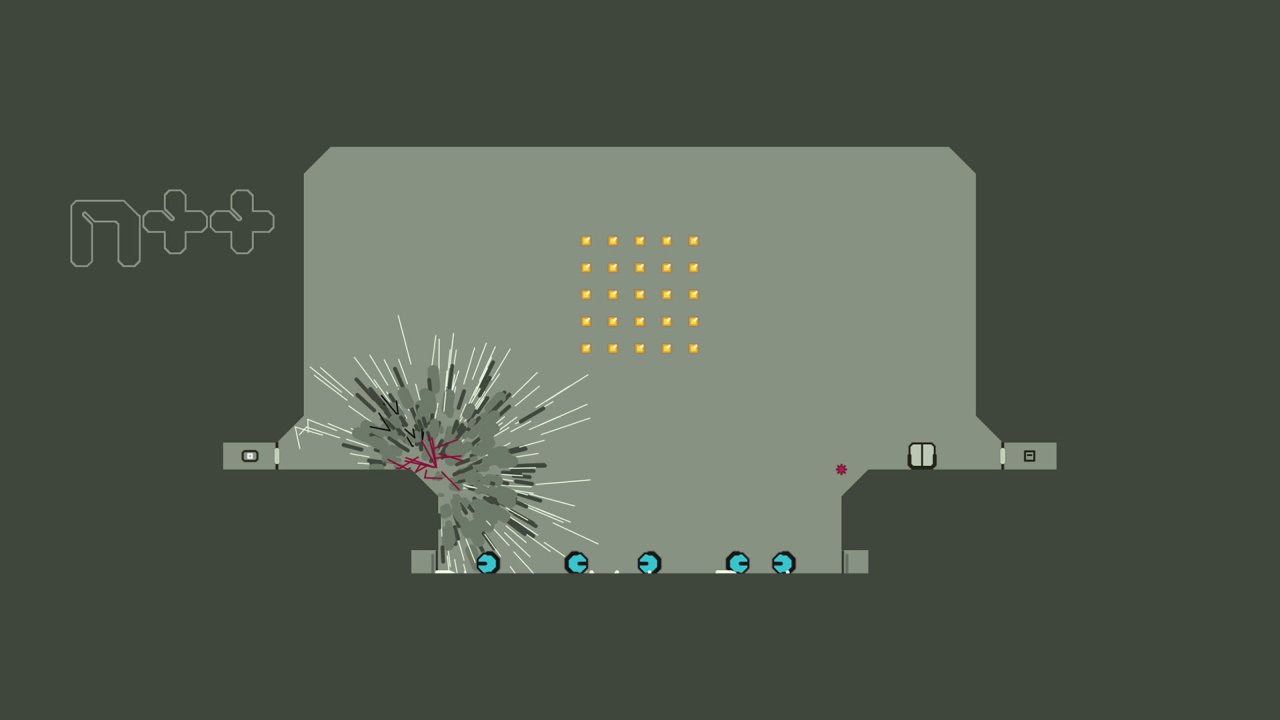
Some years later, much has changed in the world – the word “Flash” is spoken with disdain, and the basic concept of N has just seen its second console release in the form of N++ on the PS4. A lot has changed with N, too: it’s a lot prettier, more responsive, and full-featured than its nascent incarnation. In some ways, though, N remains very much the same, which is both its damnation and salvation: the core gameplay that was so fun in the first place remains largely untouched, leading to a joyous experience haunted by a creeping sensation of sameness. Despite its lack of evolution in fundamental gameplay, N++ is the definitive “N” experience and an exquisitely designed, expertly polished exercise in minimalist design and puzzle-platforming.
The challenge of N++ can be distilled down to two distinct elements. First, one must “solve” the level. Is the extraneous gold in the level worth pursuing to add to the timer, or will the time taken to retrieve it negate the effort entirely? What is the ideal way to navigate the level’s geometry to make the mad dash to the exit door most efficiently? Did the developers place gold there as a cue for a route, or simply as an additional challenge to make the level more difficult?
Once the landscape is surveyed, the second element of challenge comes from the actual execution of the platforming feats required to carry out the plan of attack. There is a definite learning curve to mastering the platforming of the game, as its emphasis on momentum leads to a game that feels very different from genre competitors such as Super Meat Boy where pinpoint precision is prioritized over your character’s movement. There is an overwhelming sense of inertia here: the jumps are floaty, you will keep moving after you stop pressing in a direction, and there is a massive boost to your acceleration if you time wall-jumps and ramp-jumps correctly. It’s a control system that feels more like controlling a heavy rolling ball than a quick ninja, and one that initially turned me off.
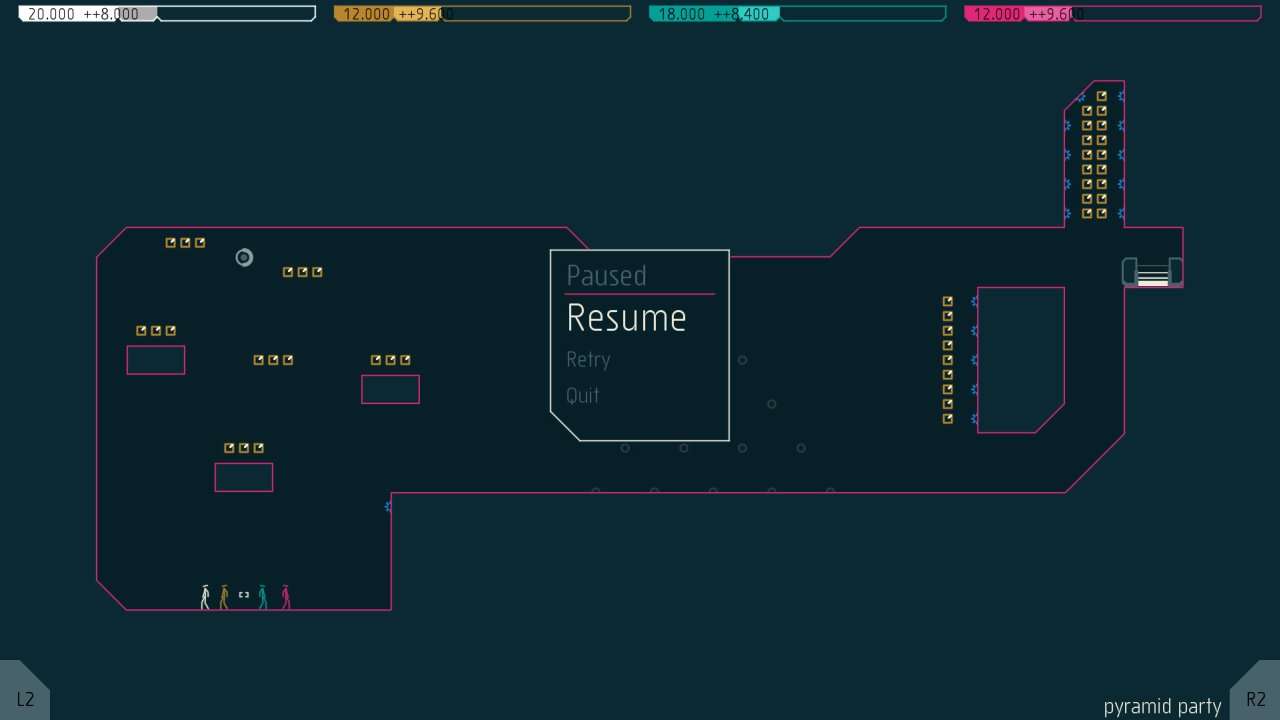
Once mastered (or, in a more likely scenario, simply grasped with some degree of competence), the movement feels fluid, natural, and extremely responsive. Through extensive intro levels, Metanet does an exemplary job of easing players into becoming deft ninjas, starting by focusing on each single aspect of the physics and movement and gradually connecting these pieces together before throwing players into the “real” N++ and Legacy levels.
It’s a good thing the game’s tutorial is so effective, too, because N++ is a hard game, edging into masocore territory. The two-pronged test of puzzle-solving and platforming is complicated by devious enemy placement, the insta-death consequence of too long a fall, and explosive mines as far as the eye can see. The enemy design is inventive and diverse, ranging from “evil clones” which follow your exact movement pattern a couple seconds behind you and kill you on impact, to stationary chain-gun turrets. Avoid the latter at all costs – they don’t play around.
While the game is challenging in general, it is rarely feels too trying or frustrating in Metanet’s levels. While the enemy placement and level design can feel sadistic, it manages to avoid feeling artificially difficult and often leads to projection of rage inwards as opposed to outwards: thanks to the precision of the controls, it never feels that the blame for failure lies at the feet of anyone other than yourself. It cannot be stressed enough how much this frustration is allayed by the ease and quickness with which a level can be restarted: a quick press of x after a death has you instantly jumping around again.
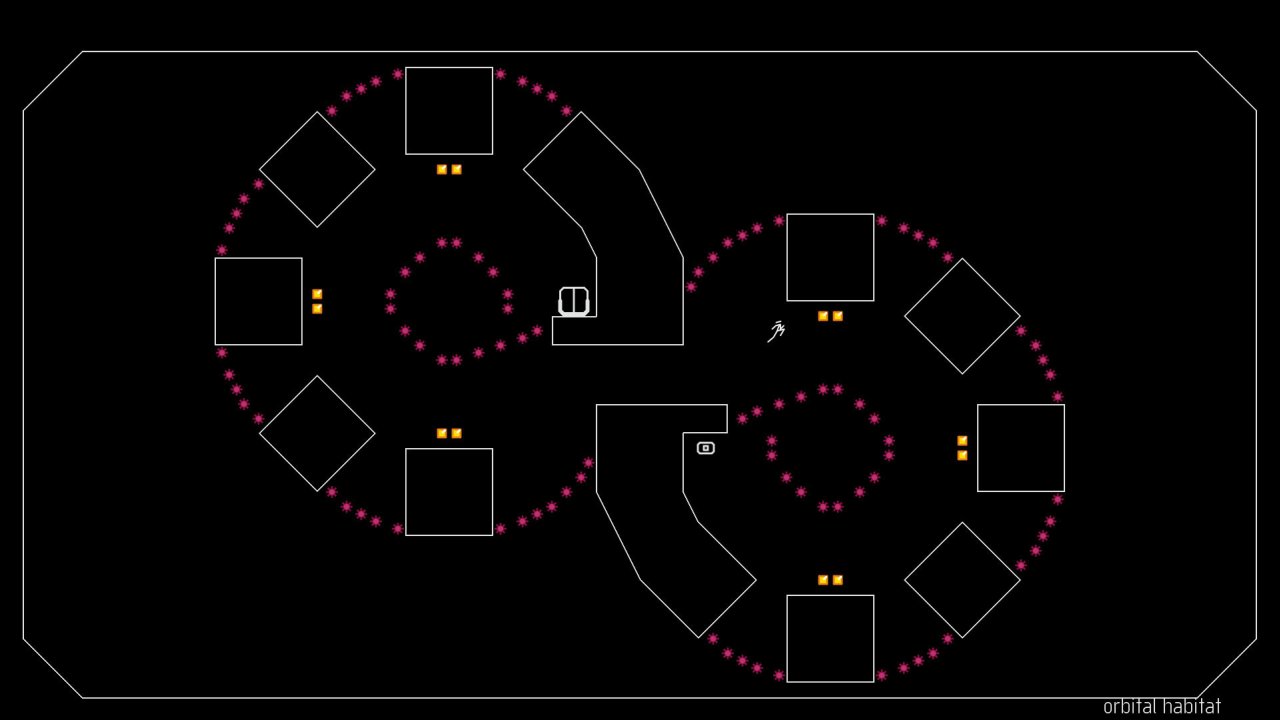
For those with more masochistic tendencies, there is no dearth of pain to be found if sought out. While simply getting to the open exit doors will count as completion of a level and will unlock subsequent ones, there is a secondary level of completion achieved by collecting all the gold in a level. Many levels which could be completed in under five seconds become a true trial by fire if trying to pick up all those little gold squares. Anyone with completionist behavior will find a ton of replayability thanks to this secondary tier of challenge where the strategy for 100%-ing can feel dissimilar enough from baseline survival as to seem like an entirely different stage.
Even for those who lack the fortitude and dexterity to leap from the frying pan into the fire, there’s a simply staggering amount of content in the vanilla game. The Solo mode of the game is broken into episodes which consist of five levels strung together and played for time. A 90 second timer begins ticking down at the beginning of the first level of the episode, with gold adding extra seconds and the timer maintaining continuity for the duration of the episode. Your time when you complete the episode is considered your score for competitive purposes, and is automatically uploaded to the online leaderboards of the game along with a video replay of your playthrough. Viewing the replays of the top times helps to ascertain the path to success, and the prominence of the leaderboards (both friends and global) in menus helps drive a strong sense of competition and incentivizes playing through episodes again to shave off a few seconds.
The true long-term value of N++ comes from the other modes of play in the game. In addition to Race levels in which the timer does not reset if you die, there are a significant number of co-operative levels which require two but support up to four player local play. The lack of online support for co-op is lamentable, but perhaps understandable given that the latency can negatively impact the precision required.
Most significant is the title’s support for sharing user-created levels. Using an expansive but intuitive suite of tools built into the game, players can easily create custom levels and upload them to Metanet’s servers to be browsed and downloaded by others. It’s an absolute joy to see what the community has created in even the short amount of time since the game’s launch. The level browser is easily navigable and facilitates access to everything from ultra-challenging levels to fascinating off-kilter strangeness: levels designed around vector art such as the “doge” meme and the Nine Inch Nails symbol, levels that bend and break the game’s rules in ways only the Internet can, and “don’t do anything” levels.
The latter is perhaps my favorite part of the whole game; they are levels where, without any player input, your ninja is catapulted, twisted, and propelled along complex Rube Goldbergian courses in the most flashy and obtuse way possible. I had only seen this kind of insane attention to detail and tweaking lead to poetically fluid chaos in Trackmania before, and seeing this specific brand of madness play out in a different game is incredibly satisfying. With the support of weekly featured tracks and sorting by player rating, there’s an endless amount of N++ to consume, should one desire to do so.
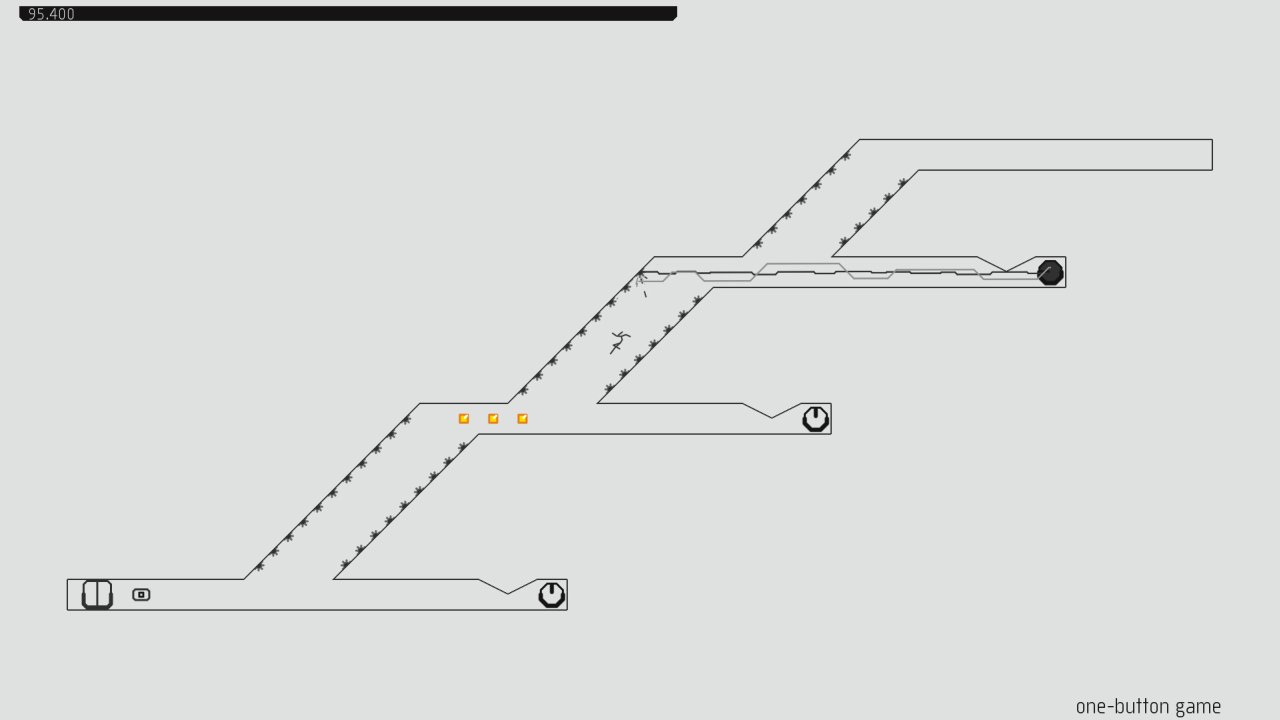
Whether that desire exists or not is a separate issue. N++ is the successor to the original N, a flash game, and N+, a refinement of that game released last generation. In terms of fundamental gameplay, not very much has changed in this iteration. There are new levels, and a lot of them – but the core gameplay loop remains very much the same. If you didn’t enjoy the fundamental act of playing those releases, there’s no major addition or revolution here to change that. While it doesn’t feel incomplete or lacking, it’s perhaps a disappointment to see no major reworking of mechanics or advancements to gameplay in the franchise’s third iteration. Instead, Metanet has dedicated their entire focus to making N++ the ultimate “N” experience through an overwhelmingly impressive amount of polish in content delivery.
This loving polish is most apparent in N++’s visual and aural aesthetics. Embracing the simplicity of the game’s core loop, Metanet has created a look and feel that could serve as a masterclass in minimalist visual and sound design. Gone are the static greys of previous iterations, being replaced by unlockable and selectable “themes” that change the entire look of the game’s simple 2D graphics. These range from muted pastels to a “retro,” Vib-Ribbon inspired vector graphics style. The easily changed scenery does a lot to freshen up the game, and is complimented by a solid, subtle-yet-driving electronic soundtrack.
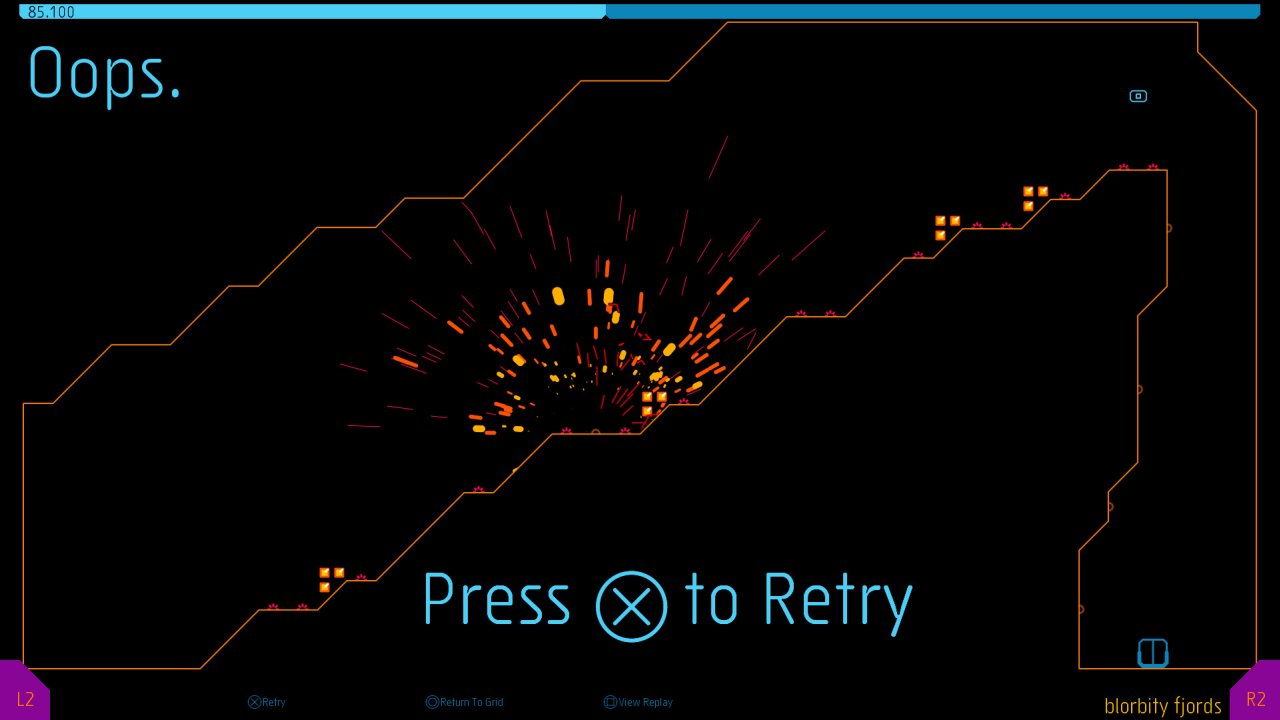
Much like its minimalist design aesthetics, N++’s personality operates in subtlety. The “story” of your endlessly respawning avatar is relegated to several paragraphs of setup accessible from the main menu, opening with the frank and accurate proclamation: “You are a ninja.” There’s an expository word or two more that follows explaining your love for gold, your 90 second level timer/lifespan (due to a high metabolism, naturally) and the titular “N,” or Way of the Ninja, but really, N++ says all it wants to say and all you need to know with that single-sentenced opening paragraph. This flippant but understated sense of humor extends to some of the level names, which range from playfully on-the-nose (a tutorial level teaching how to wall slide named The Art of Descent) to cheeky (A Brief History of Amazing Letdowns features a lot of falling from high platforms). In a higher dose, this jocularity could be grating, but is scarce and subdued enough to simply lend levity to the proceedings; it helps minimalist art and sound design which could feel clinical and cold instead feel stylish and humanized.
N++ is a visually striking, well-crafted experience that feels like the ultimate realization of the vision Metanet has had for the franchise for years. Despite the laudable level of polish, however, the game can’t help escape its iterative nature to feel fresh and new; there’s a pervasive sensation of sameness that will be unavoidable for anyone who has played Metanet’s past efforts. For those turned off by the gameplay of the previous N games, there’s nothing new here that’s significant enough to rope players back in. For those who, like your ninja avatar, seek gold and death in abundance, N++ stands as a new standard for value, polish, and presentation and is the definitive “N” experience.
